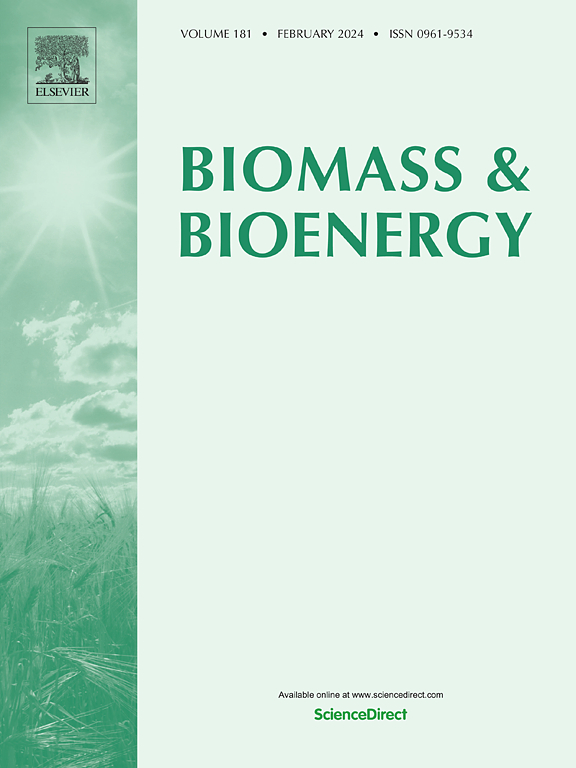Synthetic efforts towards the phenyl glycosidic class of lignin-carbohydrate complex models
IF 5.8
2区 生物学
Q1 AGRICULTURAL ENGINEERING
引用次数: 0
Abstract
Within biomass as a whole, the linkages which are present have been largely identified and elucidated, one of the key types off linkages and functionalities which have been identified are lignin-carbohydrate complexes (LCC). These are the major bonding patterns found in biomass between the carbohydrate (cellulose & hemicellulose) and lignin functionalities from extracted portions of biomass. One of the main bonding patterns within LCCs is phenyl glycosidic, where the C1 of the carbohydrate is bonded through an ether bond to an aromatic ring. The synthesis of such compounds which represent extracted portions of biomass have a carbohydrate portion and therefore will allow for water solubility and negates the need for organic solvents when probing depolymerisation studies.
苯基糖苷类木质素-碳水化合物复合物模型的合成研究
在整个生物质中,存在的键已被大量识别和阐明,其中一种关键类型的键和功能已被确定为木质素-碳水化合物复合物(LCC)。这些是在生物质中发现的碳水化合物(纤维素)之间的主要键合模式。生物质提取部分的半纤维素和木质素功能。lcc中的主要键模式之一是苯基糖苷,其中碳水化合物的C1通过醚键连接到芳香环上。这些化合物的合成代表了生物质的提取部分,具有碳水化合物部分,因此将允许水溶性,并且在探测解聚合研究时不需要有机溶剂。
本文章由计算机程序翻译,如有差异,请以英文原文为准。
求助全文
约1分钟内获得全文
求助全文
来源期刊

Biomass & Bioenergy
工程技术-能源与燃料
CiteScore
11.50
自引率
3.30%
发文量
258
审稿时长
60 days
期刊介绍:
Biomass & Bioenergy is an international journal publishing original research papers and short communications, review articles and case studies on biological resources, chemical and biological processes, and biomass products for new renewable sources of energy and materials.
The scope of the journal extends to the environmental, management and economic aspects of biomass and bioenergy.
Key areas covered by the journal:
• Biomass: sources, energy crop production processes, genetic improvements, composition. Please note that research on these biomass subjects must be linked directly to bioenergy generation.
• Biological Residues: residues/rests from agricultural production, forestry and plantations (palm, sugar etc), processing industries, and municipal sources (MSW). Papers on the use of biomass residues through innovative processes/technological novelty and/or consideration of feedstock/system sustainability (or unsustainability) are welcomed. However waste treatment processes and pollution control or mitigation which are only tangentially related to bioenergy are not in the scope of the journal, as they are more suited to publications in the environmental arena. Papers that describe conventional waste streams (ie well described in existing literature) that do not empirically address ''new'' added value from the process are not suitable for submission to the journal.
• Bioenergy Processes: fermentations, thermochemical conversions, liquid and gaseous fuels, and petrochemical substitutes
• Bioenergy Utilization: direct combustion, gasification, electricity production, chemical processes, and by-product remediation
• Biomass and the Environment: carbon cycle, the net energy efficiency of bioenergy systems, assessment of sustainability, and biodiversity issues.
 求助内容:
求助内容: 应助结果提醒方式:
应助结果提醒方式:


